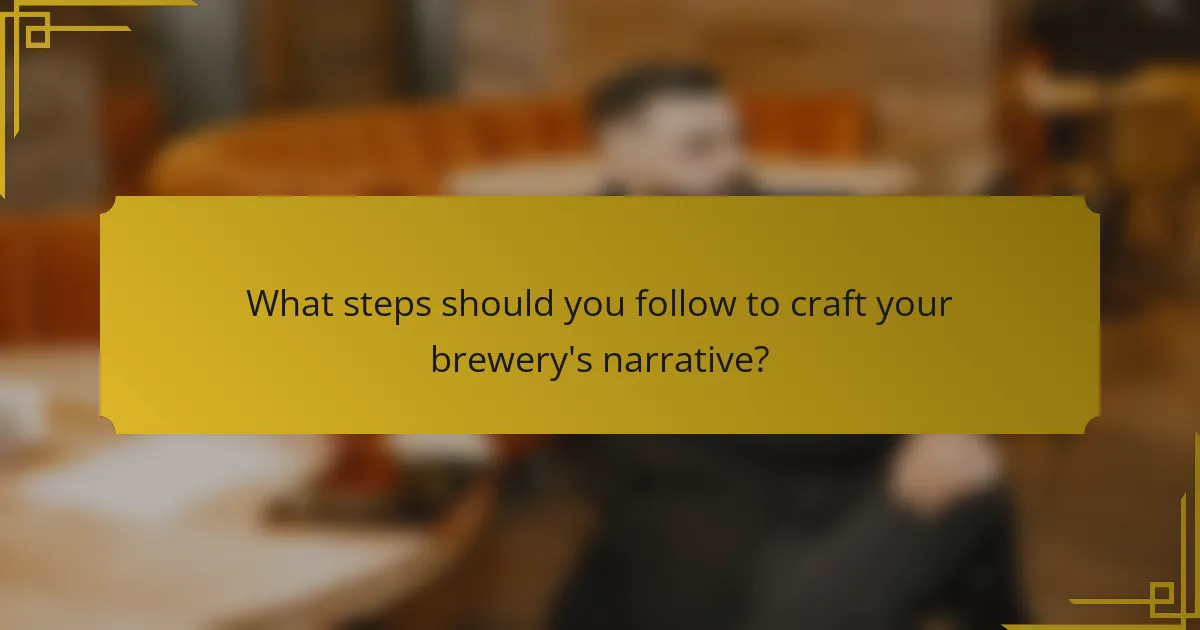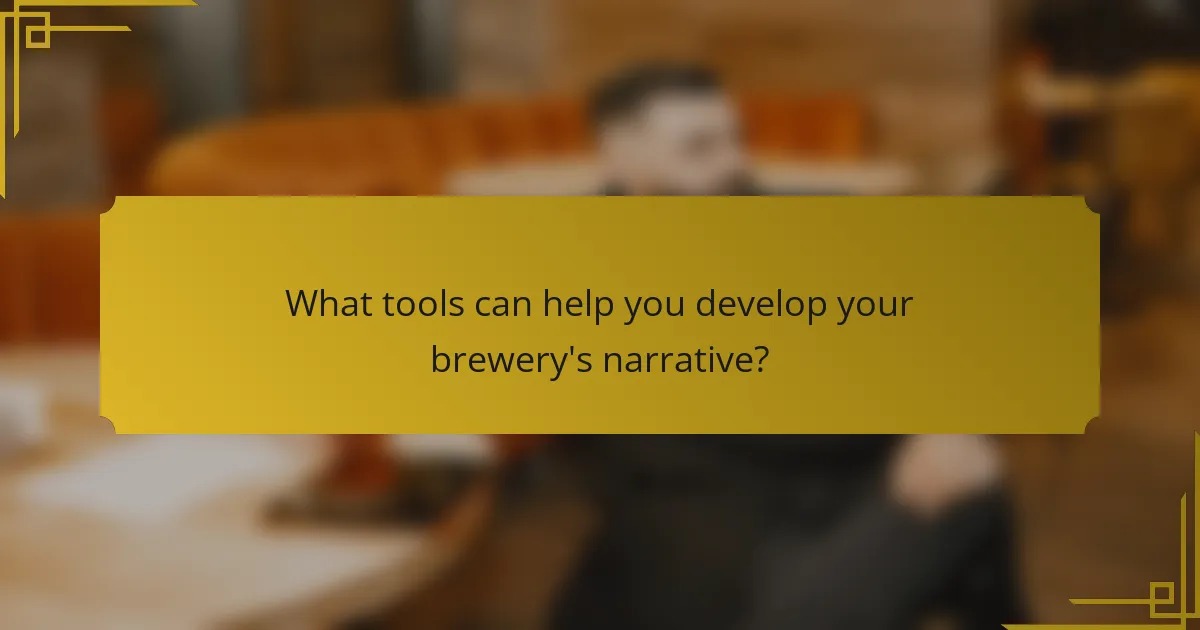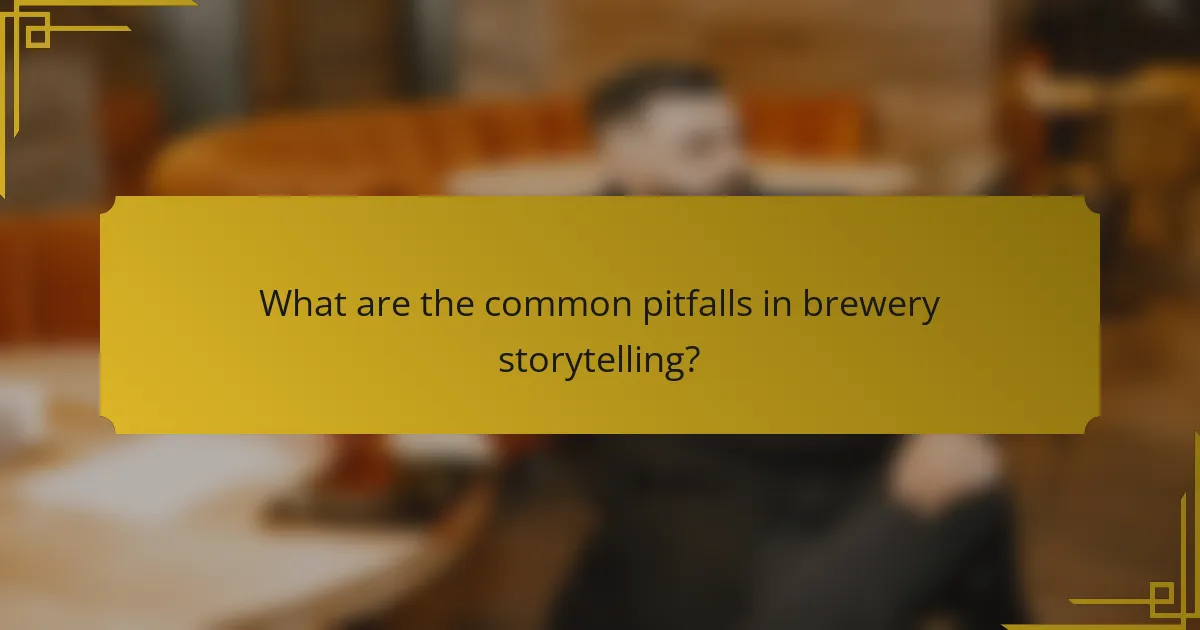Your brewery’s story is a powerful tool that can attract customers by forging emotional connections and establishing a distinctive identity. By identifying what makes your brand unique and defining your target audience, you can create a compelling narrative that resonates with them, enhancing your brewery’s presence in a competitive market.

How can your brewery’s story attract more customers?
Your brewery’s story can significantly attract more customers by creating an emotional connection and establishing a unique identity. A compelling narrative not only differentiates your brand but also fosters loyalty and encourages word-of-mouth promotion.
Engaging storytelling techniques
Utilize storytelling techniques that resonate with your audience, such as personal anecdotes and vivid imagery. Share the journey of how your brewery was founded, including challenges faced and milestones achieved. This approach helps customers feel invested in your brand.
Incorporate elements like humor, suspense, or local folklore to make your narrative more captivating. For example, consider hosting events where you share stories about the brewing process or the inspiration behind specific beers, enhancing the overall experience.
Highlighting local ingredients
Emphasizing local ingredients in your brewery’s narrative can create a strong sense of community and sustainability. Highlight partnerships with local farmers or suppliers, showcasing how these relationships enhance the quality and flavor of your beers.
Consider creating seasonal brews that feature ingredients sourced from nearby producers. This not only supports the local economy but also allows you to tell a story about the region’s agricultural heritage, making your offerings more appealing to customers who value local sourcing.
Showcasing brewery history
Sharing your brewery’s history can deepen customer engagement by providing context and authenticity. Discuss the origins of your brewery, including the inspiration behind its name and the evolution of your brewing techniques over time.
Incorporate historical photos or artifacts into your tasting room or website to visually connect customers with your past. This can create a richer experience and encourage patrons to feel like they are part of your brewery’s ongoing story.

What steps should you follow to craft your brewery’s narrative?
To craft your brewery’s narrative, start by identifying what makes your brand unique, then define who your target audience is, and finally create a compelling brand voice that resonates with them. This process helps establish a strong identity and connection with customers, enhancing your brewery’s presence in a competitive market.
Step 1: Identify your unique selling points
Your unique selling points (USPs) are the characteristics that set your brewery apart from others. Consider factors such as your brewing techniques, ingredient sourcing, or community involvement. For example, if you use locally sourced ingredients, that can be a strong USP that appeals to environmentally conscious consumers.
Make a list of your USPs and prioritize them based on their relevance to your target audience. Focus on 2-3 key points that you can consistently communicate through your marketing efforts. This clarity will help you maintain a cohesive narrative across all platforms.
Step 2: Define your target audience
Understanding your target audience is crucial for crafting an effective narrative. Identify demographics such as age, gender, location, and lifestyle preferences. For instance, if your brewery caters to craft beer enthusiasts aged 25-40 in urban areas, tailor your narrative to reflect their interests and values.
Conduct surveys or engage with customers on social media to gather insights about their preferences. This information will guide your messaging and ensure it resonates with the right people, ultimately driving customer loyalty and engagement.
Step 3: Create a compelling brand voice
Your brand voice is the personality and tone you use in all communications. It should reflect your brewery’s identity and resonate with your target audience. Decide whether you want your voice to be casual and friendly, or more sophisticated and formal, depending on the image you want to project.
Consistency is key; ensure that your brand voice is maintained across all channels, including your website, social media, and packaging. This helps create a recognizable identity that customers can connect with, making your brewery memorable in a crowded market.

How can you integrate your narrative into marketing?
Integrating your brewery’s narrative into marketing involves weaving your unique story throughout various channels to create a cohesive brand identity. This approach not only engages customers but also fosters loyalty by connecting them emotionally to your brand.
Utilizing social media platforms
Social media is a powerful tool for sharing your brewery’s narrative. Use platforms like Instagram and Facebook to post behind-the-scenes content, share the inspiration behind your beers, and engage with your audience through storytelling. Regularly update your followers with posts that reflect your brand’s values and history.
Consider using features like Instagram Stories or Facebook Live to showcase events, brewing processes, or customer testimonials. This real-time interaction can deepen the connection with your audience and encourage them to share their experiences with your brand.
Incorporating storytelling in packaging
Your packaging is a direct touchpoint with consumers and can effectively convey your narrative. Use labels to tell the story of each beer, including its origin, ingredients, and the inspiration behind its creation. This not only informs but also intrigues potential customers.
Consider incorporating QR codes on your packaging that link to videos or articles about your brewery’s history or brewing process. This adds an interactive element and allows customers to dive deeper into your brand’s story.
Creating engaging website content
Your website should serve as a central hub for your brewery’s narrative. Create dedicated sections that detail your story, mission, and the journey of your brewing process. Use engaging visuals and compelling copy to draw visitors in and keep them interested.
Incorporate a blog where you share updates, brewing tips, and stories about your community involvement. Regularly updated content not only improves SEO but also keeps your audience engaged and informed about your brand’s ongoing narrative.

What tools can help you develop your brewery’s narrative?
Several tools can assist in crafting your brewery’s narrative, focusing on storytelling, content management, and customer insights. Utilizing these resources effectively can help you create a compelling and authentic brand story that resonates with your audience.
Brand storytelling workshops
Brand storytelling workshops are collaborative sessions designed to help brewery owners and their teams articulate their unique narratives. These workshops often involve brainstorming exercises, guided discussions, and creative activities to uncover the essence of your brand.
Consider engaging a facilitator with experience in the beverage industry to lead these workshops. This can provide valuable insights and help align your team on key messages and themes that reflect your brewery’s identity.
Content management systems
A content management system (CMS) is essential for organizing and distributing your brewery’s narrative across various platforms. A good CMS allows you to create, edit, and publish content easily, ensuring consistency in messaging across your website, social media, and marketing materials.
Popular CMS options include WordPress, Squarespace, and Wix, each offering different features and pricing. Choose one that fits your technical skills and budget, and ensure it supports multimedia content to enhance your storytelling.
Customer feedback tools
Customer feedback tools are vital for understanding how your narrative resonates with your audience. Platforms like SurveyMonkey or Google Forms can help you gather insights on customer perceptions and preferences regarding your brand story.
Regularly collecting and analyzing feedback allows you to refine your narrative based on real customer experiences. Consider implementing feedback loops, such as post-purchase surveys or social media polls, to keep your storytelling relevant and engaging.

What are the common pitfalls in brewery storytelling?
Common pitfalls in brewery storytelling include overcomplicating the message, neglecting audience engagement, and ignoring brand consistency. These issues can dilute your narrative and make it less effective in connecting with customers.
Overcomplicating the message
Overcomplicating the message can confuse your audience and detract from your brewery’s core identity. A clear and concise narrative is essential; aim for simplicity in your storytelling. Focus on the key elements that define your brewery, such as your brewing process, unique flavors, and the inspiration behind your creations.
To avoid this pitfall, use straightforward language and avoid jargon that may alienate potential customers. A good rule of thumb is to keep your story to a few key points that can be easily communicated in a sentence or two.
Neglecting audience engagement
Neglecting audience engagement can lead to missed opportunities for building a loyal customer base. Your story should resonate with your audience’s interests and values, making them feel connected to your brewery. Consider incorporating interactive elements such as social media campaigns or brewery tours that invite customers to share their experiences.
Regularly seek feedback from your audience to understand what aspects of your story they connect with most. Engaging with customers through events or tastings can also create a sense of community and strengthen their attachment to your brand.
Ignoring brand consistency
Ignoring brand consistency can create confusion and weaken your brewery’s identity. Your storytelling should align with your overall brand image, including your logo, packaging, and marketing materials. Consistency helps reinforce your message and builds trust with your audience.
To maintain brand consistency, develop a style guide that outlines your narrative tone, visual elements, and messaging strategies. Regularly review all content to ensure it reflects your brewery’s values and mission, creating a cohesive experience for your customers across all platforms.

How can you measure the impact of your brewery’s narrative?
Measuring the impact of your brewery’s narrative involves assessing how well your story resonates with customers and influences their purchasing decisions. Key metrics include customer engagement, brand loyalty, and sales performance.
Customer Feedback
Gathering customer feedback is essential for understanding the effectiveness of your brewery’s narrative. Use surveys, social media polls, and direct conversations to collect insights on how your story is perceived. Look for common themes in the feedback to identify strengths and areas for improvement.
Sales Data
Analyzing sales data can provide a quantitative measure of your narrative’s impact. Track sales trends before and after implementing your narrative to see if there is a correlation. Consider factors like seasonal variations and marketing efforts to isolate the effects of your storytelling.
Brand Engagement Metrics
Brand engagement metrics, such as social media interactions and website traffic, can indicate how well your narrative is resonating with your audience. Monitor likes, shares, comments, and page views to gauge interest. A significant increase in these metrics often reflects a successful narrative.
Community Involvement
Engaging with your local community can enhance your brewery’s narrative and its impact. Participate in local events, collaborate with other businesses, and support community initiatives. This involvement can strengthen your brand’s story and foster customer loyalty.
